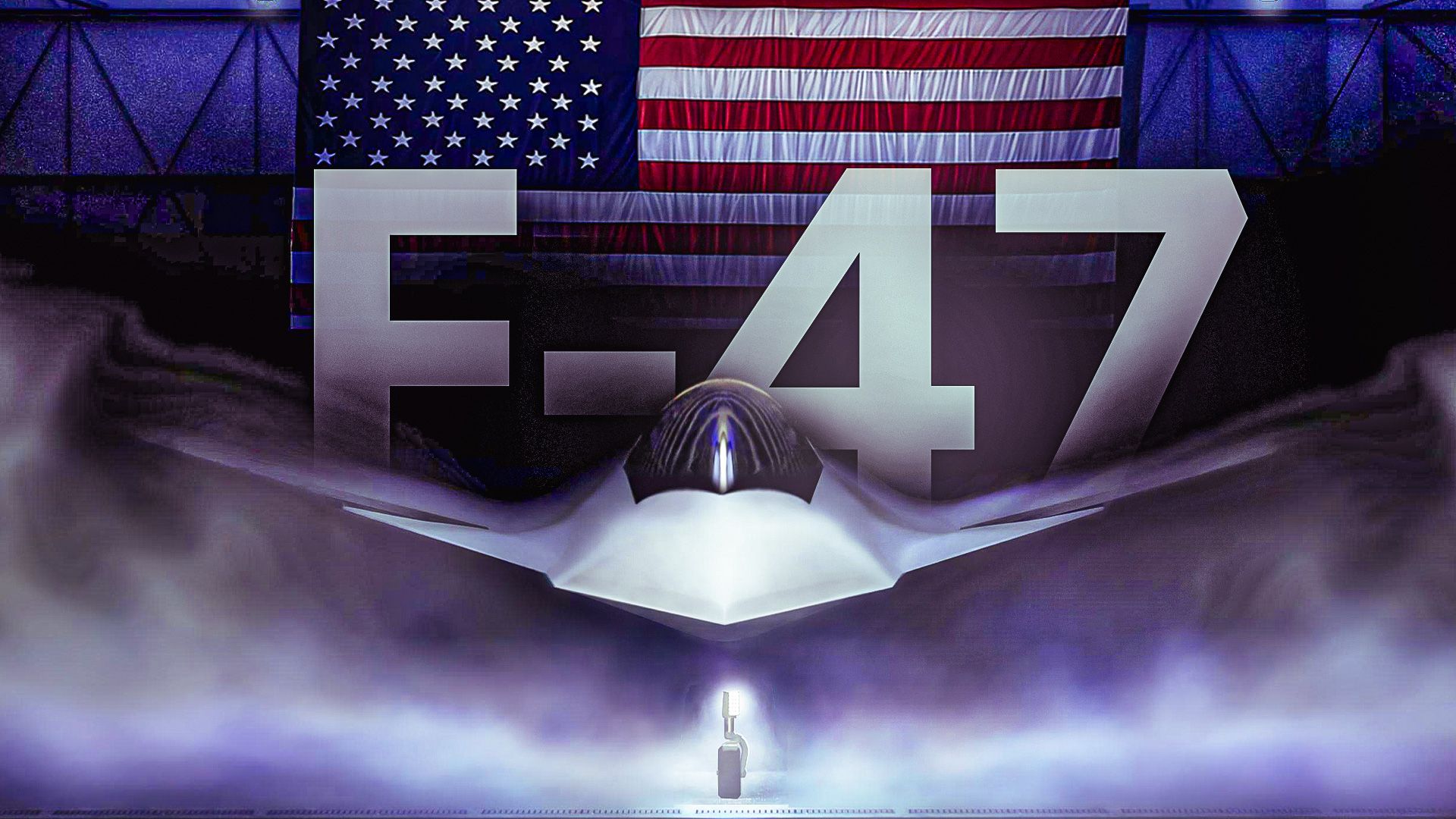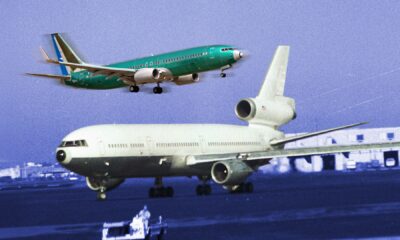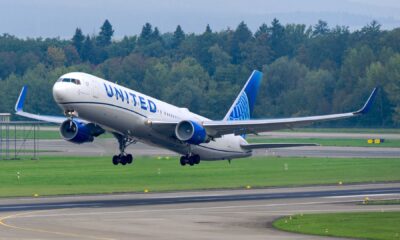World
Boeing Wins Contract to Build F-47 Stealth Fighter for USAF

The United States Air Force (USAF) has officially selected Boeing to develop its next-generation air-superiority fighter, the sixth-generation F-47. Announced on March 21, 2025, this decision surprised many in the defense industry, as Lockheed Martin has long been regarded as the leader in stealth technology, producing renowned aircraft such as the F-22 Raptor and the F-35 Lightning II. The F-47 program is central to the USAF’s Next Generation Air Dominance (NGAD) initiative, which aims to ensure American air superiority well into the 2030s.
The significance of this contract extends beyond just aircraft design. The NGAD initiative envisions a synergistic system that integrates a manned fighter with a network of autonomous drones, sensors, and advanced digital command systems. This approach reflects a strategic shift in how the USAF plans to conduct air operations in the future.
Strategic Decision-Making Behind the F-47 Selection
The selection of Boeing over Lockheed Martin for the F-47 project is rooted in multiple strategic factors. One major concern for Pentagon officials has been the over-reliance on a single contractor for fighter aircraft production. With Lockheed responsible for both the F-22 and F-35, the Department of Defense recognized the need to diversify its defense industrial base. Awarding the contract to Boeing aligns with this principle, as noted in various congressional oversight reports.
Another critical factor was the maturity of Boeing’s proposal. The company has leveraged years of technology development and testing through DARPA-sponsored X-plane programs. These experimental aircraft have explored advancements in adaptive engines, stealth materials, and AI-driven flight control, giving Boeing a notable advantage in readiness and risk mitigation.
The urgency of the current geopolitical landscape also played a role in the decision. As nations like China and Russia develop advanced next-generation fighters, the USAF recognizes the need to expedite the F-47’s development. The Fiscal Year 2026 budget allocates approximately US $3.5 billion to continue work on the F-47, underscoring its status as a top priority.
Technical Specifications and Operational Capabilities
The F-47 is designed to meet specific technical and operational requirements to maintain air superiority. Key features include:
– **Penetration-capable stealth**: The F-47 will integrate advanced radar-absorbent materials and adaptive intakes to enhance its stealth capabilities, alongside sophisticated sensors that can fuse data across various domains.
– **Unmanned teaming**: As a “quarterback,” the F-47 will coordinate multiple Collaborative Combat Aircraft (CCAs), which will extend its operational range and capabilities.
– **Range and sustainability**: The aircraft will feature a new adaptive-cycle engine, co-developed by GE Aerospace and Pratt & Whitney, designed to optimize efficiency and thrust under various conditions.
– **Modularity and adaptability**: The F-47 will be built to accept upgrades in sensors, propulsion, and weapons without requiring a complete redesign, a necessity in the fast-evolving landscape of military technology.
– **Speed and agility**: While specific performance metrics are classified, the first flight is targeted for 2028, with operational capabilities expected in the early 2030s.
The anticipated procurement number for the F-47 is approximately 185 aircraft, with a combat radius exceeding 1,000 nautical miles.
The projected cost of developing the F-47 is significant, with estimates suggesting it will exceed US $20 billion before production begins. Most of this funding will go through Boeing’s St. Louis facility, which is already responsible for producing the F-15EX and T-7A Red Hawk.
Implications for the Defense Industry and Future Warfare
Lockheed Martin’s response to the F-47 decision has been swift. The company announced plans to focus on upgrading its existing F-35 fleet, proposing enhancements that could deliver much of the F-47’s capabilities at a fraction of the cost. This shift highlights a strategic awareness of the competitive landscape, as Lockheed remains the leading exporter of advanced fighter jets to allied nations.
While Boeing’s win signals a changing tide in the defense industry, it also presents an opportunity for the company to reclaim its stature as a leader in fighter aircraft development. For Lockheed, the focus on the F-35 allows it to maintain relevance in the market, particularly as many countries may not have the budget to invest in sixth-generation fighters.
The introduction of the F-47 will likely reshape air combat strategies. Rather than traditional dogfighting, the F-47 will serve as a command node directing unmanned aircraft to perform various tactical roles. This shift emphasizes orchestration over brute force, allowing for more sophisticated approaches to conflict.
As Boeing prepares to scale up production and modernize its facilities, the implications of this decision will resonate throughout the defense sector. The F-47 not only reaffirms the USAF’s commitment to maintaining air superiority but also sends a clear message to potential adversaries that the United States is moving forward with agility and innovation in military technology.
-

 World3 months ago
World3 months agoScientists Unearth Ancient Antarctic Ice to Unlock Climate Secrets
-

 Entertainment4 months ago
Entertainment4 months agoTrump and McCormick to Announce $70 Billion Energy Investments
-

 Lifestyle3 months ago
Lifestyle3 months agoTransLink Launches Food Truck Program to Boost Revenue in Vancouver
-

 Science4 months ago
Science4 months agoFour Astronauts Return to Earth After International Space Station Mission
-

 Technology2 months ago
Technology2 months agoApple Notes Enhances Functionality with Markdown Support in macOS 26
-

 Top Stories2 weeks ago
Top Stories2 weeks agoUrgent Update: Fatal Crash on Highway 99 Claims Life of Pitt Meadows Man
-

 Sports3 months ago
Sports3 months agoSearch Underway for Missing Hunter Amid Hokkaido Bear Emergency
-

 Politics3 months ago
Politics3 months agoUkrainian Tennis Star Elina Svitolina Faces Death Threats Online
-

 Technology3 months ago
Technology3 months agoFrosthaven Launches Early Access on July 31, 2025
-

 Politics3 months ago
Politics3 months agoCarney Engages First Nations Leaders at Development Law Summit
-

 Entertainment3 months ago
Entertainment3 months agoCalgary Theatre Troupe Revives Magic at Winnipeg Fringe Festival
-

 Politics2 weeks ago
Politics2 weeks agoShutdown Reflects Democratic Struggles Amid Economic Concerns


















